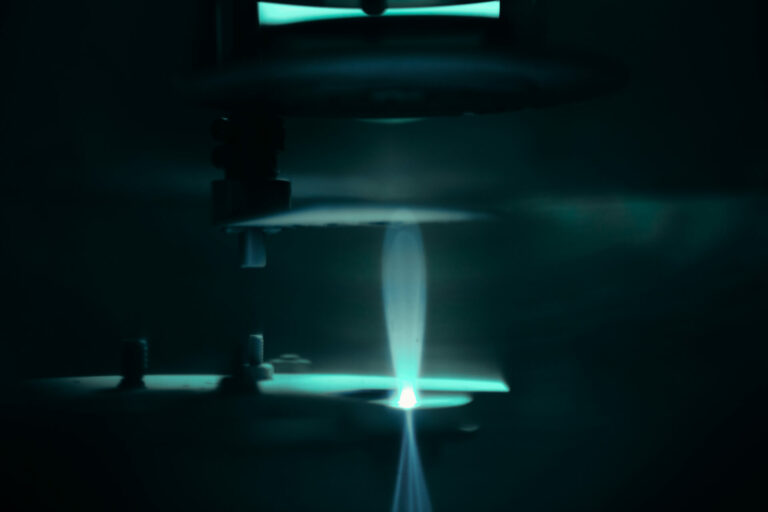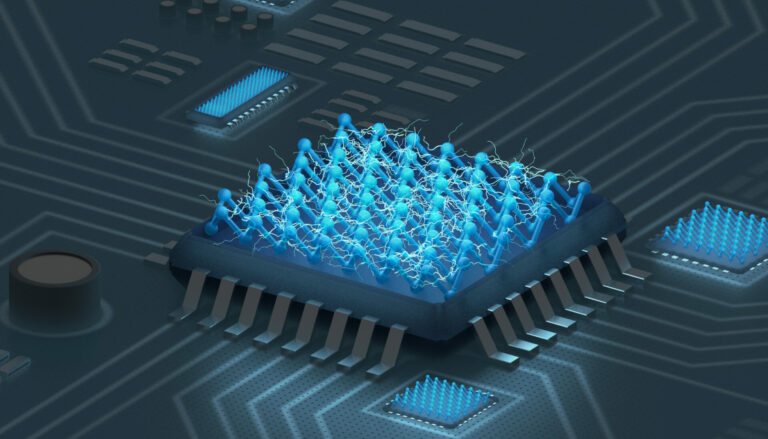Applied Physics
Time for a new contender in energy conversion and storage
Combining distinctive properties of two-dimensional materials inspires research to reveal a new frontrunner.

Evolutionary search has helped scientists predict the lowest energy structure of a two-dimensional (2D) material, B2P6, with some remarkable features, including structural anisotropy and Janus geometry.
Janus materials—named after the two-faced Greek god of duality—have two surfaces with distinct physical properties. As such, they offer unique benefits, such as high solar-to-hydrogen efficiency.
Anisotropic materials exhibit different properties when measured along different directions. In the case of B2P6, the ionic diffusion is strongly anisotropic, a feature that can be potentially useful in affordable energy storage solutions, such as metal-ion batteries.
Unlike antecedents, such as graphene, another 2D material, this new material has a widely tunable band gap that makes it a better candidate for use in electronic devices.
Udo Schwingenschlögl, a professor of applied physics at KAUST, and Minglei Sun, a postdoc, performed a detailed search for the most stable 2D crystal structure of binary compounds comprising boron and phosphorus atoms until they arrived at B2P6.
“We used state-of-the-art evolutionary search and first-principles calculations to predict this structure,” says Sun.
Based on biological evolution, evolutionary search is a computational method by which the scientists can search for a crystal structure within thousands of candidates. Using this structure as input in first-principles calculations, they can then determine the physical properties according to the principles of quantum theory.

The KAUST team used state-of-the-art evolutionary search and first-principles calculations to predict the structure of B2P6.
© 2020 KAUST
“The extraordinary features endowed by anisotropy and Janus geometry inspired us to search for a 2D material that combines these merits,” explains Sun. This combination allows for new properties, and in turn, wider applications.
In preliminary research, B2P6 showed excellent promise in the field of electronics and for application in energy conversion and storage.
The new material demonstrates strong light absorption, making it potentially useful in clean-fuel production from photocatalytic water splitting—a process that uses natural or artificial light to produce hydrogen from water. It is more efficient than traditional photocatalysts, mainly due to the low recombination rate of photogenerated carriers.
“For B2P6, the recombination of photogenerated carriers is significantly suppressed by the intrinsic electric field induced by its Janus structure,” explains Sun. “That means more photogenerated carriers will take part in the redox reactions for water splitting. The efficiency of carrier utilization is as high as 45.1 percent.”
Next, the researchers plan to “predict more anisotropic Janus 2D materials with extraordinary properties and provide experimental guidelines for colleagues,” Schwingenschlögl says.
References
- Sun, M. & Schwingenschlögl U. B2P6: A two-dimensional anisotropic Janus material with potential in photocatalytic water splitting and metal-ion batteries. Chemistry of Materials 32, 4795-4800 (2020).| article
You might also like

Applied Physics
2D materials could boost magnetic data storage

Applied Physics
Onward and upward to smaller faster devices

Applied Physics
Rethinking and rigor brings promising protein for cancer therapy

Applied Physics
Tough memory device aims for space missions

Applied Physics
Cool runnings

Applied Mathematics and Computational Sciences
Freeze charges in flames

Applied Physics
2D metal contacts stop transistor leakage currents in their tracks

Applied Physics




